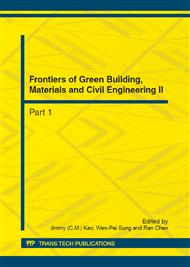p.1300
p.1307
p.1311
p.1315
p.1320
p.1324
p.1329
p.1334
p.1338
Thermal Discomfort Evaluation in Hot Environment
Abstract:
In this study, the subjective emotion, galvanic skin response and sweat rate of 10 volunteers were examined under different climatic conditions in a chamber. The conditions were 25°Cwith 50% relative humidity, 30°Cwith 90% relative humidity, 35°Cwith 90% relative humidity, 40°C with 90% relative humidity. The subjects, aged from 22 to 25 years old, performed sedentary trade with conscious water. All subjects completed the scheduled time of 120 minutes. The study showed that the skin wittedness but not the subjective emotion stimulus affected the galvanic skin response significantly. It indicated that physiology discomfort was the main cause of thermal discomfort, and the influence of psychology was faint in hot environment.
Info:
Periodical:
Pages:
1320-1323
Citation:
Online since:
August 2012
Authors:
Keywords:
Price:
Сopyright:
© 2012 Trans Tech Publications Ltd. All Rights Reserved
Share:
Citation:


